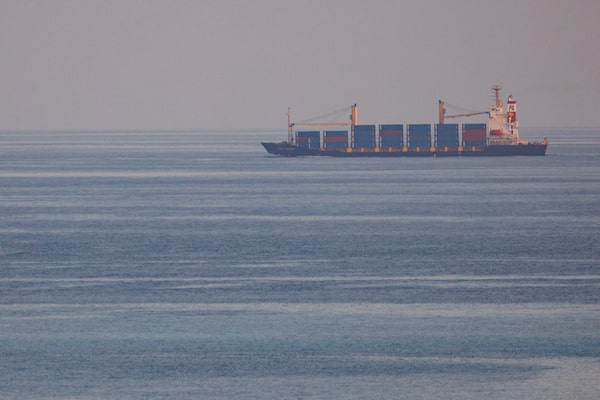
The container ship, Kota Rahmat approaches the Bab-el-Mandeb strait in Obock, Djibouti, on Jan. 18.Luke Dray/Getty Images
Craig Alexander has served as chief economist at Deloitte Canada, the Conference Board of Canada and Toronto-Dominion Bank.
In the wake of the COVID-19 pandemic and geopolitical tensions with China, there has been a lot of talk about efforts to make global supply chains more resilient. Despite this prudent objective, there is now evidence that international supply chains have become longer and more complex, increasing the risks of future supply shocks that carry potentially significant economic and financial costs.
To be clear, North American businesses have realized large benefits from being plugged into global supply chains, such as increased efficiencies and lower inventory costs. Some of these savings were passed along to consumers, with the result that globalization played a key role in dampening inflation in the 1990s and 2000s. It also contributed to the sustained low interest rate environment delivered by the U.S. Federal Reserve and the Bank of Canada.
However, the pandemic laid bare the risks of international dependence. When health risks spiked and government lockdowns were imposed, the impact on global supply chains was dramatic. Just-in-time inventory systems broke down. There was insufficient supply to meet market demand for products, with the result that prices soared.
Meanwhile, global supply chains have been threatened by geopolitical tensions with China. North American businesses have also been at risk of U.S. protectionism. The threat of trade disruption creates risk and encourages firms to reduce their reliance on overseas suppliers. As a result, governments and businesses have discussed reshoring or friend-shoring, meaning moving supply chains closer to home or to countries with less perceived political risk.
However, research from the Bank of International Settlements suggests that supply chains may not be moving toward greater resilience. There has been a shift away from direct supply chain ties with China, but the BIS’s surprising finding is that supply chains are becoming longer, more complex and potentially riskier.
The BIS looked at firm-level data of global value chains in December, 2021, and September, 2023. The bank found that there was a drop in reliance on direct cross-border suppliers – one firm buying directly from another international firm – which should make supply chains more resilient. But it also found that indirect cross-country linkages had increased. For example, instead of buying components from China, firms are buying components from another country that then sources components from a farther country, sometimes China.
The BIS work showed that the lengthening of supply chains and the increasing complexity of them have been global phenomena. Japan and South Korea have experienced the greatest lengthening, followed by North America. Canada and Mexico jointly have experienced a greater lengthening than the United States.
The BIS findings are consistent with other reports from the U.S. National Bureau of Economic Research and Deloitte showing that the risks to supply chains remain elevated. There are a host of potential shocks, such as health threats, trade wars, military conflicts, extreme weather events and large-scale cyberattacks.
Why does this matter? The impact to individual firms from supply chain disruptions can be dramatic, triggering material financial losses or reduced market share, which can impact the value of share prices. Severe disruption to supply chains can also have macroeconomic effects, with inadequate supply triggering higher inflation and weaker economic growth. This has several implications.
If supply chains remain vulnerable, policy makers need to prioritize thinking about potential future supply interruptions as well as the inflationary consequences. Recently, the Bank of Canada indicated that it is updating its models to account better for the supply side of the economy – the BIS work would suggest that this is prudent.
Governments will need to factor the evolution of supply chains into their thinking about foreign policy. It is possible that geopolitical risk with respect to China is being reduced, but geopolitical risk to other countries in Asia has increased. Alternatively, it may be the case that the geopolitical risk with China has not been reduced, but is instead being masked by more stages in international supply chains.
A key takeaway is that firms need to stress test their business models with scenarios of possible future supply shocks. Such analysis may show that current supply chains are more vulnerable than perceived.
Lastly, the lengthening of supply chains and the increased use of indirect ones will likely make it more costly to bring products to market, and thereby raise import prices and consumer prices. This effect, combined with the continued supply risks, might mean central banks need to keep interest rates higher than they were before the pandemic on a sustained basis.
Make no mistake, Canada is a trading nation, and our economy needs to be plugged into global value chains. Doing so creates enormous economic opportunity that exceeds the limited potential of our small domestic market. But seizing the opportunity also means taking risks, both economic and geopolitical. The key is understanding those risks and how they are evolving.